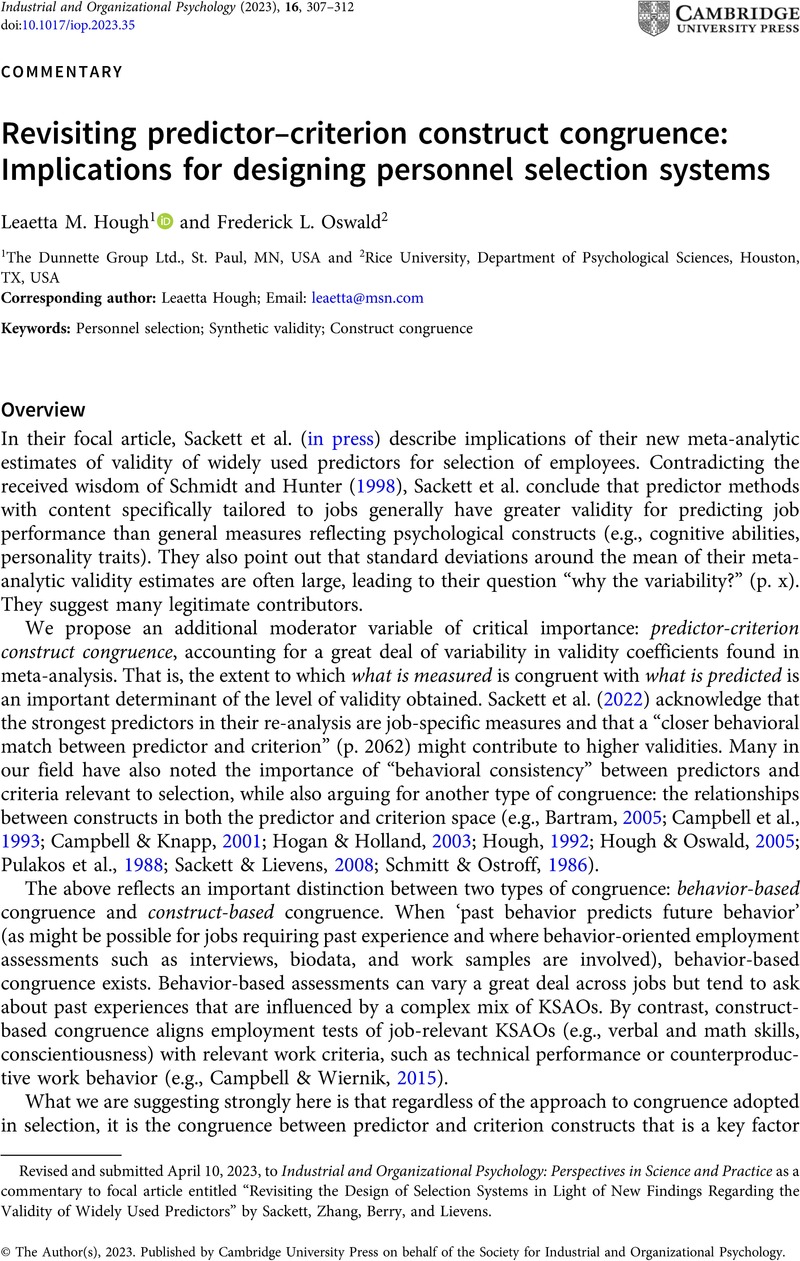Published online by Cambridge University Press: 31 August 2023

Revised and submitted April 10, 2023, to Industrial and Organizational Psychology: Perspectives in Science and Practice as a commentary to focal article entitled “Revisiting the Design of Selection Systems in Light of New Findings Regarding the Validity of Widely Used Predictors” by Sackett, Zhang, Berry, and Lievens.